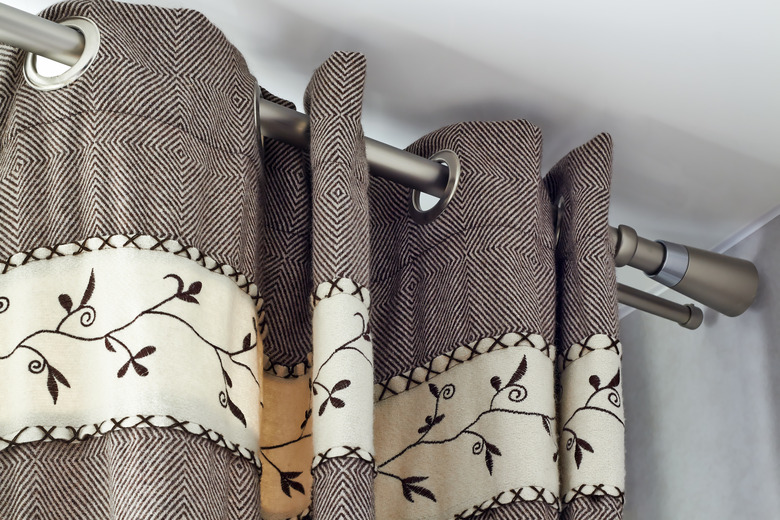How To Keep A Curtain Rod From Peeling The Paint Off The Wall
We may receive a commission on purchases made from links.
Some curtains are held in place by a tension rod, a long dual-fitted rod with an internal spring that presses each end against the wall. It's a simple way to hang curtains without screws or brackets, but it can also damage the paint. A simple change to how you use tension rods can protect the paint and keep your window coverings displayed beautifully.
Tension Rod Damage
Tension Rod Damage
A tension rod's ends are fitted with rubber caps designed to protect the wall. Tension rods can be used for window coverings as well as for shower curtains. A problem occurs when a tension rod is pressed up against a painted wall and a disc of paint comes off when it is taken down. Take steps to eliminate the damage a tension curtain rod can do to paint.
Wall Paint Issues
Wall Paint Issues
Paint is designed to adhere to the surface of the wall, and in ideal conditions, the atmosphere around the paint has low moisture. Moisture causes the paint to peel and pull away from the surface. Pressure on the paint can speed up the damage, such as pressure from the rubber end cap of a tension rod.
Bathroom paint where you hang your shower curtain usually has a semi-gloss or satin finish, which resists mold and mildew better and creates a harder surface that can better withstand direct pressure. Other rooms typically use a matte finish paint, which is soft and makes it easy for a tension curtain rod to press into the paint and lift it off.
Using Felt Pads
Using Felt Pads
When the rubber end caps press onto soft paint, moisture can get caught inside and not evaporate. The easy way to eliminate this problem is to place felt pads between the rubber and the paint to absorb moisture, diffuse the direct pressure from the tension rod, and cushion the rubber from pushing into the drywall. Home improvement stores sell all sizes of felt pads. Choose a size that is about 1/4 inch larger than the rubber end pads on the curtain rod. Change the pads every four to six weeks for best results.
Applying Felt Pads
Applying Felt Pads
The first step to reduce the tension on the curtain rod is to twist the center of the rod. Put a felt pad between the left side of the curtain rod and the wall. Press the rubber end cap to the wall to hold the felt pad in place. Put another felt pad on the right side of the rod, between the rubber end cap and the wall. Increase the tension on the rod until the rubber end caps press onto the felt pads securely.
Other Tips for Tension Rods
Other Tips for Tension Rods
When repainting the area where the tension rod will be, homeowners should allow the paint to dry for at least a week before pressing a curtain tension rod onto it. This gives the paint more time to cure, which makes it harder and less likely to pull off the wall. Keep the room with the curtain rod well ventilated with a fan or open window. Don't put too much tension on the rod so that it presses too hard into the paint. Only create enough tension to hold the curtain in place securely.
